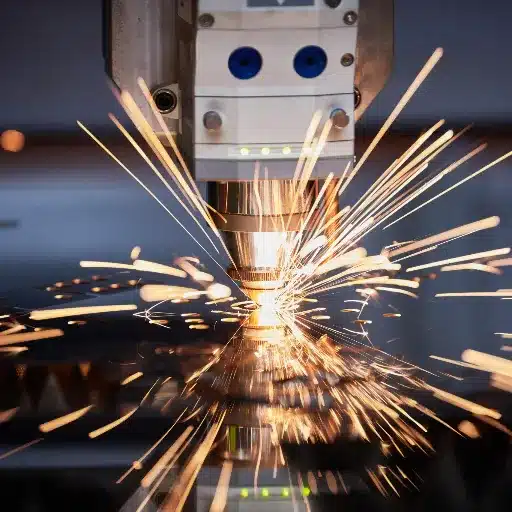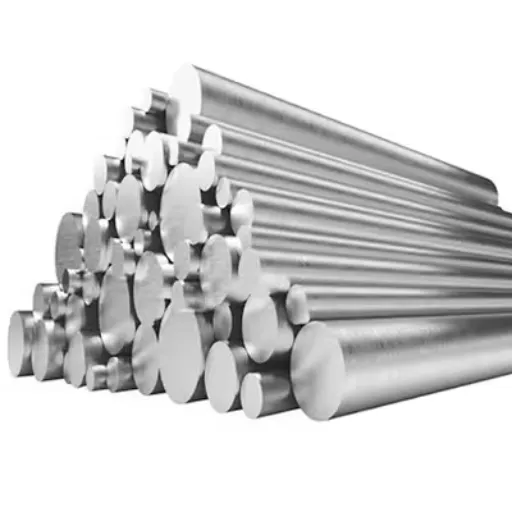The grades of stainless steel vary, as do the types of stainless steel. 304 and 430 stainless steels are well-known and highly talked about. If you work in the industry or are interested in DIY projects, knowing the differences is essential to choosing the right material for your work. This guide will strip the guesswork. We will blanket the most vital features, benefits, and uses of 304 and 430 to support decision-making regarding comparisons during project execution. Prepare to learn practically and simply about corrosion resistance, cost-effectiveness, and everything else. By the end of this reading, you will be ready to decide using the information gathered from the guide.
What is 304 Stainless Steel?

An alloy commonly used is 304 stainless steel, which possesses great versatility and is renowned for its strength against corrosion, damage, and wear. Strengthening metals like chromium and nickel in 304 stainless steel gives it unmatched resilience to rusting and staining while making it suitable for kitchen appliances, medical tools, and buildings. Not only this, but 304 stainless steel also proves to be highly non-magnetic and very easy to scrub clean. Even extreme weather conditions pose no threat to it. This remarkable blend of dependability, practicality, and ease makes 304 one of the most favored grades of stainless steel.
Chemical Composition of 304 Stainless Steel
| Element | Percentage Range (%) |
|---|---|
| Carbon (C) | ≤ 0.07 |
| Chromium (Cr) | 17.50 – 19.50 |
| Nickel (Ni) | 8.00 – 10.50 |
| Manganese (Mn) | ≤ 2.00 |
| Silicon (Si) | ≤ 1.00 |
| Phosphorus (P) | ≤ 0.045 |
| Sulfur (S) | ≤ 0.030 |
| Nitrogen (N) | ≤ 0.10 |
| Iron (Fe) | Balance |
Mechanical Properties of 304 Stainless Steel
| Property | Value |
|---|---|
| Tensile Strength (MPa) | 515 – 750 |
| Yield Strength (MPa) | ≥ 205 |
| Elongation (%) | ≥ 40 |
| Hardness (Rockwell B) | ≤ 92 |
| Hardness (Brinell) | ≤ 201 |
| Modulus of Elasticity (GPa) | 193 – 200 |
| Density (g/cm³) | 8.00 |
| Thermal Conductivity (W/m.K) | 16.2 at 100°C |
Typical Applications for 304 Stainless Steel
304 stainless steel is one of the most popular grades of stainless steel because of its ease of fabrication, versatility, and excellent corrosion resistance. Below are how 304 stainless steel is commonly used:
- Stainless Steel Kitchen Equipment
The non-reactive properties of food make it inevitable that 304 stainless steel will be used in the food and beverage industries. It is found in cutlery, cookware, storage tanks, kitchen sinks, and food processing equipment. Its corrosion resistance makes it suitable for preparing saline and acidic food, maintaining hygiene, and durability.
- Medical and Pharmaceutical Equipment
Devices and surgical instruments used in the health care sector, hospital fixtures, and others call for medical-grade stainless steel. 304 stainless steel, owing to its easy cleaning and non-corrosive properties, is quite popular. Stainless steel trays, some parts of imaging devices, and operating tables are examples. Due to its high resistance to removal processes, it can undergo severe sterilization and still survive in the medical field.
- Architectural and Construction Applications
Decorative and structural parts of the building, like fences and claddings, use 304 stainless steel. It extends its suitability for modern builds and its indoor and outdoor corrosion resistance. Its sturdy composition enables it to withstand prolonged outdoor exposure.
Modern architectual design also gain from its smooth finish and attractive dull luster.
- Automotive and Transportation Industry
304 stainless steel is frequently used in automotive parts, including exhaust systems, automotive trim, and automotive moldings, due to its high oxidation resistance and ability to withstand high temperatures. Moreover, it also helps prolong the life and strength of automobile components, enduring different weather conditions.
- Industrial Equipment
Well matched for pipelines, chemical containers, and steam exchangers, 304 stainless steel is best suited for containing extremely harsh moisture conditions, chemicals, and high pressure. It is essential in the oil and gas, mining, and chemical processing industries.
- Fasteners and Hardware
Bolts, nuts, screws, and other fasteners often use 304 stainless steel. Its durability ensures reliable performance for securing structures and machinery in demanding environments.
- Consumer Products
Many consumer items, such as watches, jewelry, and electronics casings, are made using 304 stainless steel because of its appealing look and resistance to rust.
Supporting Data and Insights
- As attributed to 304 stainless steel bolts, about 10% of the world’s steel supply is accounted for, as documented by the World Steel Association. 304 stainless is one of the most consumed grades of steel. The demand for stainless steel is extremely high, as the food and beverage industry alone accounts for 40%.
- Research proves that 304 stainless steel maintains its integrity and does not corrode at chloride levels up to 200 mg/L, showcasing its versatility.
The industries that use 304 stainless steel showcase its great value making it a material that is trusted for innovation and dependability without which would be difficult to comprehend., making it a material trusted for innovation and dependability, without which it
Understanding 430 Stainless Steel
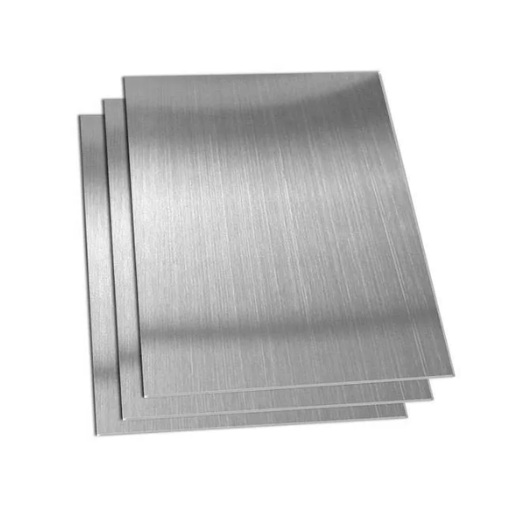
430 stainless steel exhibits Ferritic type stainless steel properties, containing low resistance alloying elements that do not transform under immense pressure and fracture. This grade is best due to its highly cost-effective nature and great corrosion resistance. It has notable uses in kitchen appliances, window trim, and automobile parts. These applications benefit from its excellent finish, not just aesthetically, but due to its easy fabrication abilities. Its strong oxidation resistance and mild corrosive circumstance tolerability make this steel grade a choice for routine tasks and engineering work.
Chemical Composition of 430 Stainless Steel
Stainless grade 430 has a specific chemical composition that includes the following elements for the best performance, moderate strength, and corrosion resistance:
- Chromium (Cr) – 16.0% to 18%
- Manganese (Mn) – Maximum 0.5%
- Silicon (Si) – Maximum 0.5%
- Phosphorus (P) – Maximum 0.03%
- Uns International Standard Specification:
Consequently, all the above-mentioned components provide adequate performance to achieve the desired properties, which are good ductility and moderate corrosion resistance, making them ideal candidates for industrial applications.
Mechanical Properties of 430 Stainless Steel
| Property | Value |
|---|---|
| Tensile Strength (MPa) | 450 – 600 |
| Yield Strength (MPa) | ≥ 205 |
| Elongation (%) | ≥ 20 |
| Hardness (Rockwell B) | ≤ 89 |
| Hardness (Brinell) | ≤ 183 |
| Modulus of Elasticity (GPa) | 200 |
| Density (g/cm³) | 7.75 |
| Thermal Conductivity (W/m.K) | 23.9 at 100°C |
Common Uses of 430 Stainless Steel
| Application Area | Examples of Use |
|---|---|
| Kitchen Appliances | Sinks, oven liners, and and range hoods |
| Automotive Industry | Trim, accents, and exhaust system parts |
| Architectural Applications | Decorative trim, door/window frames |
| Industrial Equipment | Storage tanks, heat exchangers |
| Household Goods | Dishwashers, refrigerators, and cookers |
| Fasteners and Hardware | Screws, bolts, hinges |
| Food Processing | Non-aggressive environment equipment |
304 vs 430: Key Differences and Similarities
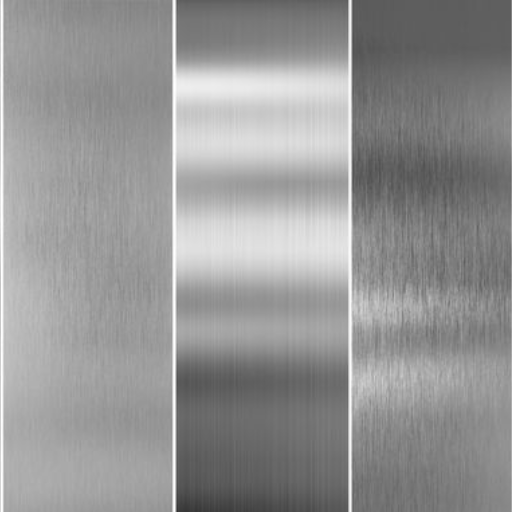
| Feature | 304 Stainless Steel | 430 Stainless Steel |
|---|---|---|
| Composition | High nickel, 8-10.5% | Low nickel, ≤ 0.75% |
| Chromium Content | 17.5-19.5% | 16-18% |
| Corrosion Resistance | Excellent | Moderate |
| Magnetism | Non-magnetic | Magnetic |
| Weldability | Easy to weld | Difficult to weld |
| Hardness (BHN) | 201 | 183 |
| Cost | Higher | Lower |
| Applications | Food-grade, industrial, medical | Decorative, automotive, appliances |
Corrosion Resistance: How 304 and 430 Compare
| Feature | 304 Stainless Steel | 430 Stainless Steel |
|---|---|---|
| Corrosion Resistance | Excellent in harsh environments | Moderate, suitable for mild conditions |
| Nickel Content | 8-10.5% | ≤ 0.75% |
| Chromium Content | 17.5-19.5% | 16-18% |
| Resistance to Chemicals | High, including acids | Limited, not for harsh chemicals |
| Saltwater Resistance | Good | Prone to pitting corrosion |
| Cost Impact | Higher due to nickel | Lower, budget-friendly |
Understanding Magnetic Properties
Regarding magnetic features, I believe stainless steel of type 304 is non-magnetic even after welding or forming procedures due to its austenitic base structure. 430 stainless steel, on the other hand, has a Ferritic base, making it naturally magnetic. The unique properties of these two grades of stainless steel are attributed to the different types of crystalline structures affecting their magnetic field response.
Weldability of 304 vs 430
| Feature | 304 Stainless Steel | 430 Stainless Steel |
|---|---|---|
| Weldability | High, easy to weld | Limited, challenging to weld |
| Preheating Requirement | Not required | Preheating at 150-200°C needed |
| Post-Weld Treatment | Not necessary | Annealing may improve weld area |
| Filler Material | Standard 304 filler rods | Requires specific filler grades |
| Risk of Cracking | Low | Higher due to brittleness |
Which Stainless Steel Grade is More Cost-Effective?
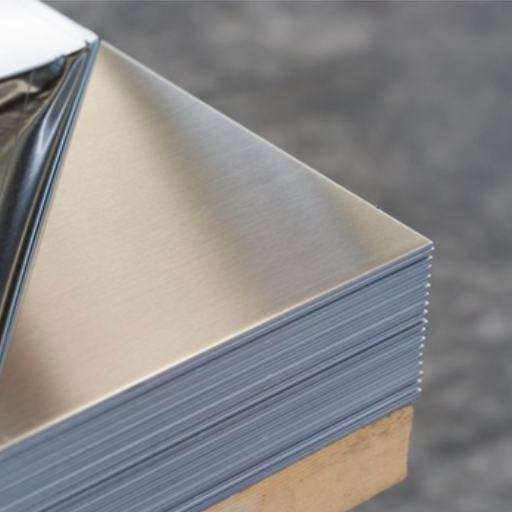
In cost comparisons, 430 is generally more economical than 304 because it contains less nickel and is therefore cheaper. However, the decision depends on the application. 430 is more economical for projects where corrosion resistance is not as important, while 304 is better for long-term investment in harsher environments due to its greater durability and corrosion resistance.
Price Comparison: 304 vs 430 Stainless Steel
| Feature | 304 Stainless Steel | 430 Stainless Steel |
|---|---|---|
| Cost | Higher due to nickel content | Lower, nickel-free composition |
| Price Ratio | 100% | 55-75% of 304’s cost |
| Market Fluctuation | Affected by nickel prices | Less affected by nickel prices |
| Application Impact | Used in premium applications | Budget-friendly alternatives |
Long-Term Aesthetic Appeal and Maintenance Costs
Although 304 stainless steel is usually more expensive than 430, its long-term aesthetic value and lower maintenance needs make it ideal in corrosive environments. On the other hand, 430 offers a cost-effective solution where high performance is not as critical.
How to Choose Between 430 and 304 Stainless Steel for Your Needs
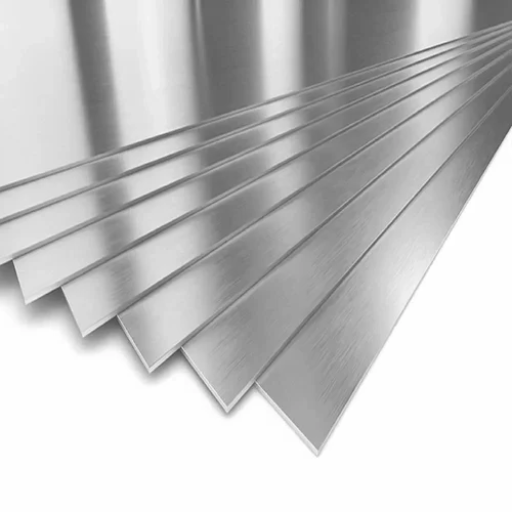
| Criteria | 430 Stainless Steel | 304 Stainless Steel |
|---|---|---|
| Corrosion Resistance | Moderate, for mild environments | High, for harsh environments |
| Cost | Lower, budget-friendly | Higher, premium option |
| Weldability | Limited, requires preheating | Excellent, easy to weld |
| Magnetism | Magnetic | Non-magnetic |
| Applications | Indoor appliances, decorative use | Outdoor, food-grade, industrial |
| Strength and Durability | Good | Superior |
| Finish Quality | Matte, less reflective | Mirror-like, highly polished |
Factors to Consider: Corrosion Resistance, Nickel Content, and More
If you are trying to decide between two types of stainless steels, 430 and 304, it’s clear you have a specific development for your application. That choice comes with a wide variety of factors and stresses. Take a look at the following five standout factors:
- Corrosion Resistance
Moisture and corrosive chemicals can significantly damage exposed, unprotected materials. 304 stainless steel triumphs with its superior chromium and nickel corrosion resistance. 430 stainless steel, on the other hand, has more difficulty protecting itself from rust and tarnishing, which limits its use to dry conditions.
- Nickel Content
Thanks to its nickel content, 304 is a ductile steel with unmatched temperature resistance and the ability to complement even the most complex shaping needs, like welding. In demanding situations, 430 stainless is a much cheaper option if you can afford the lack of versatility the unquestionable absence of nickel brings.
- Magnetism
Another interesting domain is magnetism, where 430 stainless triumphs over other types because of its Ferritic nature. Unlike 304, which is non-magnetic, 304 retains its property of being non-magnetic and austenitic. That simple difference can make a remarkable impact in case your project has magnetic field applications, which are rare.
- Aesthetic Appearance
304 stainless steel has a high corrosion resistance, allowing it to retain a shiny and polished look for an extended period. Even stainless steel 430 looks appealing, but does not maintain its aesthetic appeal over time without proper upkeep.
- Cost Effectiveness
Stainless steel 430 is the most economical choice for people working on a budget. When viewed from a long-term angle, the stainless steel 304 investment offers greater overall value when considering the long-term maintenance costs.
Considering these factors helps you make a better decision about which type of stainless steel is best for you in terms of budget, performance, and durability.
Impact of Environment and Usage on Choice
The choice between 304 and 430 stainless steel is primarily based on the environment and particular conditions of use.
Best known for its corrosion resistance, 304 stainless steel is used for various industrial and coastal applications with moisture, salt, and chemical exposure. Studies show that 304 stainless steel is exposed to corrosive elements for 15 to 20 years with little to no damage. This characteristic makes it ideal for outdoor and marine equipment and food processing industries that demand hygienic, strict standards. Such equipment includes, but is not limited to, outdoor and marine vessels and equipment used in food processing industries.
In comparison, 430 stainless steel is more economical and features decent oxidation resistance, making it well-suited for indoor appliances such as kitchen decor and automotive interiors. Research suggests that under highly salty or humid conditions, 430 stainless steel may become rusty after 5 to 7 years, making it less desirable in severe environmental conditions.
Professionals suggest evaluating temperature changes and chemical interactions in the environment where it will be used. For demanding applications with long-term dependability and endurance against rough conditions, 304 stainless steel is more dependable. On the other hand, 430 stainless steel offers low-stress environments and is more affordable and adequate, albeit less dependable.
Comparing Different Grades of Stainless Steel for Specific Applications
| Grade | Key Features | Best Applications | Limitations |
|---|---|---|---|
| 304 | High corrosion resistance, versatile | Kitchenware, appliances, architecture | Not ideal for saline environments |
| 316 | Superior corrosion resistance, durable | Marine, chemical processing, medical | Higher cost, harder to machine |
| 430 | Cost-effective, magnetic | Indoor appliances, decorative trim | Lower corrosion resistance |
| 420 | High hardness, wear-resistant | Cutlery, surgical tools, valves | Lower corrosion resistance |
| 303 | Highly machinable, corrosion-resistant | Nuts, bolts, gears, shafts | Reduced corrosion resistance |
References
- Studies Related to Microbially Induced Corrosion of Stainless Steel 304 and 316 – Open PRAIRIE, South Dakota State University.
- Corrosion fatigue behavior of austenitic-ferritic stainless steels – MIT DSpace.
- Corrosion resistance of the chromium-manganese-nickel and chromium-manganese austenitic stainless steels – New Jersey Institute of Technology Digital Commons.
Frequently Asked Questions (FAQ)
Q: What is the difference between 304 and 430 stainless steel?
A: 304 stainless steel is an austenitic stainless steel known for its excellent resistance to corrosion. It is part of the austenitic family of stainless steels and is widely used in various industries due to its durability and versatility. On the other hand, 430 stainless steel is a ferritic stainless steel with lower corrosion resistance compared to 304. It is magnetic and has a lower carbon content, which makes it less expensive and suitable for applications where cost is a larger factor.
Q: Is 430 stainless steel magnetic?
A: Yes, 430 stainless steel is magnetic. It is ferritic stainless steel, which means it has a magnetic crystal structure. This contrasts 304 stainless steel, which is non-magnetic in its annealed state.
Q: Where are 304 and 430 stainless steels commonly used?
A: 304 stainless steel is widely used in kitchen equipment, food processing, and chemical containers due to its resistance to corrosion and ease of cleaning. 430 stainless steel is commonly used for automotive trim, dishwasher linings, and appliances where its magnetic properties and lower cost are advantageous.
Q: How does the chromium content affect 304 and 430 stainless steel?
A: Chromium is an essential element in stainless steel that enhances its resistance to corrosion. 304 stainless steel contains about 18% chromium, which provides better corrosion resistance compared to the approximately 16-18% chromium content in 430 stainless steel. This makes grade 304 more suitable for environments where higher corrosion resistance is required.
Q: Can 430 stainless steel rust?
A: While 430 stainless steel offers better corrosion resistance than carbon steel, it is less rust-resistant than 304 stainless steel. It can rust if exposed to harsh environments, especially if the protective chromium oxide layer is damaged.
Q: Is 304 stainless steel magnetic?
A: 304 stainless steel is generally non-magnetic in its annealed form. However, it can become slightly magnetic after cold working or welding due to the formation of martensitic stainless steel in certain areas.
Q: Why is 304 stainless steel a better option for marine applications than 430?
A: 304 stainless steel offers better corrosion resistance, particularly in chloride-rich environments like those found in marine applications. This makes it more suitable than 430 stainless steel, less resistant to such conditions.
Q: How does the cost of 304 stainless steel compare to 430?
A: 430 stainless steel is generally less expensive than 304 stainless steel due to its lower nickel content and simpler production process. This makes it a cost-effective choice for applications where high corrosion resistance is not critical.
Q: What are the key applications for 316 stainless steel compared to 304 and 430?
A: 316 stainless steel is known as marine grade stainless steel due to its excellent corrosion resistance, especially against chlorides and other industrial solvents. It is often used in aquatic environments, chemical processing, and pharmaceutical equipment. In comparison, 304 is used for general purposes, while 430 is used for applications where cost is larger and corrosion resistance is less critical.
Q: Which stainless steel grade is better for appliances, 304 or 430?
A: The choice between 304 and 430 stainless steel for appliances depends on the application requirements. 304 stainless steel is preferable for appliances that require better corrosion resistance and durability, while 430 stainless steel is often chosen for its magnetic properties and cost-effectiveness.

